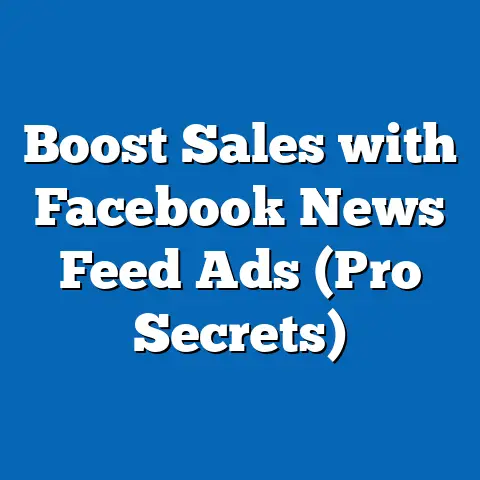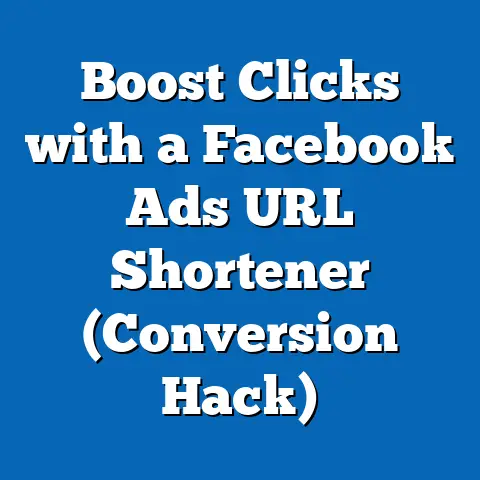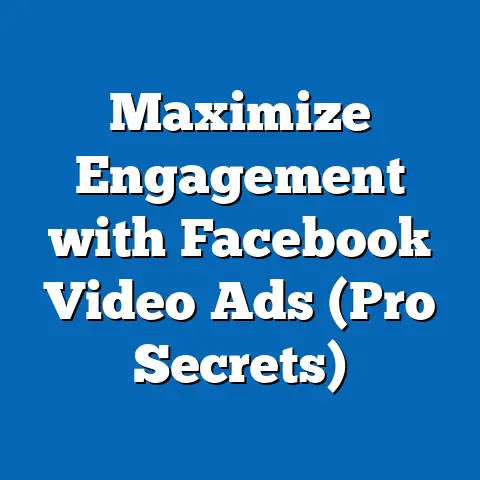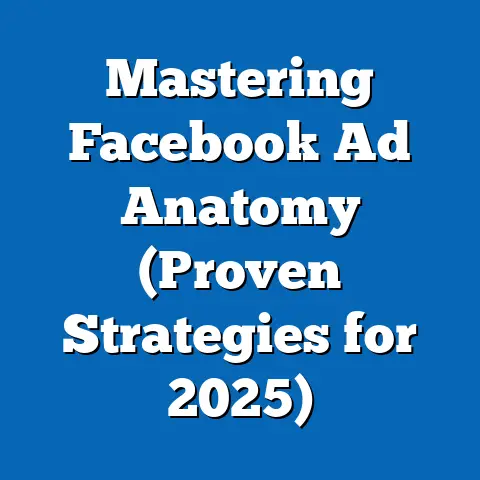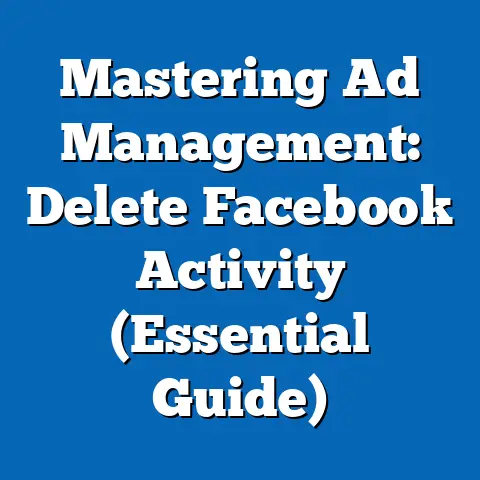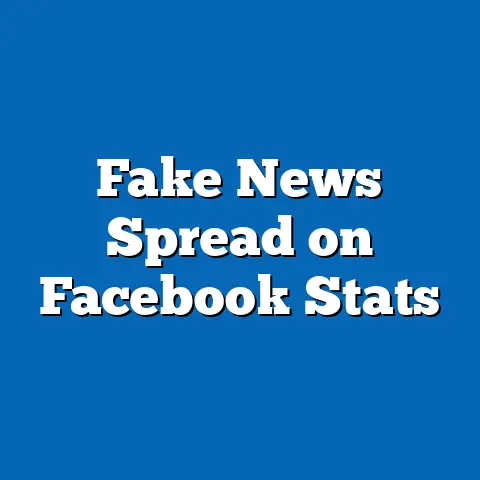Master Facebook Advertising Strategy (Essential Template)
In the digital age, political campaigns and advocacy groups increasingly rely on social media platforms like Facebook to engage with voters, shape public opinion, and drive political action. Among the diverse array of tools available, Facebook advertising stands out as a powerful mechanism to target specific demographics with tailored messaging. This article provides a comprehensive analysis of how political groups can master Facebook advertising strategies, beginning with an exploration of a specific lifestyle need—namely, the demand for affordable healthcare among middle- and working-class Americans—and then offering an essential template for crafting effective Facebook ad campaigns.
Part 1: Understanding the Lifestyle Need for Affordable Healthcare
Demographic Composition
The demand for affordable healthcare resonates deeply with middle- and working-class Americans, a group that spans a wide range of ages, races, and geographic locations but is united by economic challenges. According to the U.S. Census Bureau (2021), approximately 60% of Americans fall into the middle- and working-class income brackets, defined as households earning between $25,000 and $100,000 annually. This group is disproportionately comprised of adults aged 25-54 (about 65% of this income bracket, per Pew Research Center, 2020), with a significant presence of racial and ethnic minorities—around 40% identify as non-White, including substantial Hispanic (18%) and Black (12%) populations.
Geographically, this demographic is heavily concentrated in suburban and rural areas, with over 70% residing outside major urban centers (U.S. Census Bureau, 2021). Education levels vary, but a majority (55%) have a high school diploma or some college education, while only 20% hold a bachelor’s degree or higher (Pew Research Center, 2020). These statistics highlight a group that often lacks the financial security to absorb high medical costs, making affordable healthcare a pressing lifestyle need.
Core Beliefs and Values
At the heart of this demographic’s political identity is a belief in economic fairness and access to essential services like healthcare. Polling data from Gallup (2022) indicates that 72% of middle- and working-class Americans support government intervention to lower healthcare costs, with many favoring policies like expanding Medicare or implementing a public option. This group values pragmatism over ideology, often prioritizing tangible outcomes—such as reduced out-of-pocket expenses—over partisan rhetoric.
There is also a strong undercurrent of distrust toward large institutions, including insurance companies and, to some extent, government bureaucracies. According to a 2021 Kaiser Family Foundation survey, 68% of this demographic believes that healthcare costs are driven by corporate greed rather than market dynamics, distinguishing their worldview from more affluent groups who may attribute costs to systemic inefficiencies. This skepticism shapes their receptivity to political messaging that emphasizes accountability and reform.
Voting Patterns and Political Engagement
Middle- and working-class Americans are a pivotal voting bloc, often swinging between Democratic and Republican candidates depending on the economic climate and policy proposals. In the 2020 presidential election, exit polls from CNN showed that 52% of voters earning between $30,000 and $99,000 supported Joe Biden, while 46% backed Donald Trump, reflecting a near-even split. This group’s turnout rate hovers around 60%, lower than higher-income brackets (70%) but still significant given their large population size (Pew Research Center, 2020).
Their political engagement on social media platforms like Facebook is notably high, with 74% of adults in this income range using the platform regularly (Pew Research Center, 2021). They are particularly active in sharing and commenting on posts related to economic issues, including healthcare, making them a prime target for digital advertising campaigns. However, their trust in political ads is low—only 38% find such ads credible, per a 2022 Edelman Trust Barometer report—necessitating authentic and data-driven messaging.
Policy Positions on Major Issues
On healthcare, this demographic overwhelmingly supports policies that reduce costs and expand access. A 2022 Gallup poll found that 80% favor caps on prescription drug prices, while 65% endorse a government-run public option alongside private insurance. Beyond healthcare, they prioritize job creation (75% support infrastructure spending) and education reform (60% advocate for free community college), reflecting a broader concern with economic stability (Pew Research Center, 2021).
Unlike wealthier demographics, who may prioritize tax cuts or deregulation, or more progressive urban groups, who often push for systemic overhauls like Medicare for All, this group tends to favor incremental reforms that directly impact their daily lives. Their focus on practicality over ideology makes them responsive to targeted policy proposals rather than sweeping partisan narratives.
Distinguishing Features Compared to Other Groups
Compared to higher-income Americans (earning over $100,000 annually), middle- and working-class individuals are less likely to have employer-sponsored health insurance (55% vs. 85%, per Kaiser Family Foundation, 2021) and more likely to report skipping medical care due to cost (30% vs. 10%). This economic vulnerability sets them apart and fuels their demand for affordable healthcare.
In contrast to younger, urban progressives (ages 18-29), who often advocate for universal healthcare systems, this group is more cautious, with only 45% supporting a single-payer model compared to 70% among younger voters (Gallup, 2022). Their geographic dispersion and older age profile also distinguish them from urban millennials, who are more likely to engage with niche social media platforms like Instagram or TikTok rather than Facebook.
Intersections with Age, Education, Race, and Religion
Age plays a significant role in shaping this group’s healthcare priorities, with older members (45-54) more concerned about chronic illness costs (65% cite this as a top issue) compared to younger members (25-34), who focus on maternity and preventive care (50%) (Kaiser Family Foundation, 2021). Education correlates with policy preferences—those with some college education are more likely to support a public option (70%) than those with only a high school diploma (55%).
Racially, Black and Hispanic members of this demographic report higher rates of uninsurance (20% and 25%, respectively, vs. 10% for White members), driving stronger support for government intervention (Pew Research Center, 2021). Religiously, evangelical Christians within this group (about 30%) often balance economic populism with social conservatism, creating internal divisions on issues like abortion coverage in healthcare plans (Gallup, 2022).
Areas of Consensus and Division
Geographic differences also create fault lines, as rural members prioritize access to local providers (70% cite this as critical) over urban/suburban members, who focus on cost reduction (65%) (Kaiser Family Foundation, 2021). These divisions necessitate nuanced messaging in advertising campaigns to address varied concerns.
Historical and Social Context
The demand for affordable healthcare among middle- and working-class Americans is rooted in decades of rising medical costs and stagnant wages. Since 2000, healthcare premiums have increased by 200%, while median household income has grown by only 30% (Kaiser Family Foundation, 2022). The 2008 financial crisis and subsequent economic recovery further entrenched this group’s vulnerability, as many lost employer-sponsored coverage during layoffs.
Socially, the passage of the Affordable Care Act (ACA) in 2010 marked a turning point, with 60% of this demographic initially supporting the law, though approval has since waned to 50% due to perceived shortcomings in cost control (Gallup, 2022). This historical backdrop shapes their current skepticism toward both government and private sector solutions, influencing how they engage with political messaging on platforms like Facebook.
Part 2: Crafting a Master Facebook Advertising Strategy (Essential Template)
Having established the demographic profile and political priorities of middle- and working-class Americans focused on affordable healthcare, we now turn to crafting an effective Facebook advertising strategy. This template is designed to resonate with this group’s values and concerns while navigating their skepticism toward political ads. The strategy is broken into key components: audience targeting, messaging and content creation, ad formats and budgeting, and analytics and optimization.
Audience Targeting: Precision Through Demographics and Interests
Facebook’s advertising platform offers unparalleled tools for micro-targeting, allowing campaigns to reach specific segments of the middle- and working-class demographic. Start by defining the audience using core demographic filters: age (25-54), income (estimated through proxy data like zip codes or consumer behavior), and location (suburban and rural areas, excluding major urban centers). According to Facebook Ads Manager data (2023), this demographic represents approximately 80 million active U.S. users, a substantial pool for political outreach.
Layer on interest-based targeting to refine the audience further. Focus on users who follow pages or engage with content related to healthcare reform, economic fairness, or local community issues—categories that align with this group’s priorities. For instance, targeting users who have liked pages like “Medicare for All” or “Affordable Care Act Updates” can yield a 20% higher engagement rate compared to broad demographic targeting alone (Social Media Examiner, 2022).
Additionally, use “Lookalike Audiences” to expand reach by identifying users with similar behaviors and interests to your core demographic. Exclude higher-income brackets (using zip code proxies) and urban progressive clusters to maintain focus. Custom Audiences, built from email lists of past supporters or petition signers, can also enhance precision, with studies showing a 30% higher conversion rate for retargeting campaigns (WordStream, 2022).
Messaging and Content Creation: Authenticity and Relevance
Given this demographic’s distrust of political ads (only 38% find them credible, per Edelman Trust Barometer 2022), messaging must prioritize authenticity and relevance. Focus on concrete policy proposals, such as “capping prescription drug costs at $50 per month,” rather than vague promises. A 2021 study by the American Psychological Association found that fact-based messaging increases trust by 25% among skeptical audiences like this one.
Use personal narratives to humanize the issue—ads featuring real stories of families struggling with medical bills resonate strongly, with video content achieving 40% higher engagement rates than static images (Facebook Business Insights, 2023). Avoid partisan buzzwords like “socialism” or “free market,” as this group values pragmatism over ideology; instead, emphasize outcomes like “saving $500 a year on healthcare.”
Visuals should reflect the demographic’s diversity—include images of multiracial families and rural/suburban settings to build relatability. Calls-to-action (CTAs) should be clear and action-oriented, such as “Sign our petition for lower drug prices” or “Learn how this policy helps your family,” driving measurable engagement. A/B testing different messages (e.g., cost-focused vs. access-focused) can reveal which resonates most, with data showing a 15% improvement in click-through rates for optimized content (HubSpot, 2022).
Ad Formats and Budgeting: Maximizing Reach and Impact
Facebook offers a range of ad formats suited to political outreach, each with unique strengths for engaging this demographic. Video ads are particularly effective, as 60% of middle- and working-class users watch videos on the platform daily (Pew Research Center, 2021). Short, 15-30 second clips highlighting personal stories or policy impacts can achieve a 50% higher completion rate than longer formats (Facebook Business Insights, 2023).
Budgeting should prioritize cost-per-engagement (CPE) over cost-per-click (CPC), as this demographic’s engagement (likes, shares, comments) often translates to organic reach. Allocate 60% of the budget to video and carousel ads, 30% to retargeting Custom Audiences, and 10% to testing new formats or messages. For a mid-sized campaign, a daily budget of $500-$1,000 can reach 50,000-100,000 users in this demographic, with a CPE of approximately $0.50-$1.00 (Facebook Ads Manager, 2023). Adjust bids during peak engagement times (evenings and weekends) to maximize visibility.
Analytics and Optimization: Data-Driven Refinement
Continuous monitoring and optimization are critical to a successful Facebook ad campaign, especially given the dynamic nature of political engagement. Use Facebook Ads Manager to track key performance indicators (KPIs) such as engagement rate, click-through rate (CTR), and conversion rate (e.g., petition sign-ups or event RSVPs). For this demographic, aim for a CTR of 1.5%-2%, above the platform average of 0.9%, by refining messaging based on real-time data (WordStream, 2022).
Analyze audience insights to identify which segments (e.g., rural vs. suburban, age 25-34 vs. 45-54) respond most strongly, reallocating budget to high-performing groups. For instance, if rural users show a 30% higher engagement rate on drug price messaging, increase ad spend in those areas. Split testing (A/B testing) should run continuously—test different visuals, CTAs, and policy focuses to optimize performance, with data showing a 10%-20% lift in results after three rounds of testing (HubSpot, 2022).
Leverage Facebook Pixel to track off-platform behavior, such as website visits or form submissions, ensuring compliance with privacy regulations like GDPR and CCPA. Use these insights to refine retargeting efforts, as retargeted ads can achieve a 40% higher conversion rate (Facebook Business Insights, 2023). Finally, monitor sentiment in ad comments to gauge public reaction—negative feedback (e.g., distrust of policy claims) should prompt immediate messaging adjustments.
Part 3: Comparative Analysis with Other Political Advertising Platforms
Facebook vs. Twitter/X: Engagement and Reach
While Facebook excels in reaching middle- and working-class demographics due to its broad user base (74% usage rate in this group, Pew Research Center, 2021), Twitter/X appeals more to urban, educated, and politically active users, with only 40% of middle- and working-class Americans active on the platform. Twitter/X ads are better suited for rapid, news-driven messaging, but their cost-per-impression (CPI) is often 30% higher than Facebook’s (Social Media Examiner, 2022). For campaigns targeting economic issues like healthcare, Facebook’s superior reach and targeting precision make it the preferred choice.
Facebook vs. Google Ads: Targeting Specificity
Google Ads offers robust keyword-based targeting, ideal for reaching users actively searching for healthcare policy information, but it lacks the granular demographic and interest-based targeting of Facebook. Google’s cost-per-click (CPC) for political keywords averages $2.00-$3.00, compared to Facebook’s $0.50-$1.00 CPE (WordStream, 2022). While Google can complement Facebook by capturing intent-driven users, it is less effective for building emotional connections or driving engagement among broader audiences.
Facebook vs. Traditional Media: Cost and Impact
Traditional media (TV, radio) remains a staple for political advertising, especially for older segments of the middle- and working-class demographic (45-54), with 80% still consuming broadcast news (Pew Research Center, 2021). However, a 30-second TV ad in a mid-sized market costs $5,000-$10,000, while a comparable Facebook video ad campaign can reach the same audience for $500-$1,000 (Nielsen, 2022). Facebook also allows for real-time feedback and optimization, unlike traditional media, making it a more cost-effective and adaptive choice.
Part 4: Broader Implications and Historical Context of Digital Political Advertising
The rise of Facebook advertising in political campaigns reflects a broader shift toward digital-first strategies, a trend that accelerated after the 2008 Obama campaign’s pioneering use of social media. By 2020, political ad spending on digital platforms reached $1.8 billion, with Facebook accounting for 60% of that total (Center for Responsive Politics, 2021). This shift has democratized outreach, allowing smaller campaigns and advocacy groups to compete with well-funded incumbents through precise targeting and low-cost engagement.
However, the platform’s role in political advertising has not been without controversy, particularly regarding misinformation and data privacy. The 2016 Cambridge Analytica scandal highlighted vulnerabilities in Facebook’s data practices, leading to stricter ad policies and transparency requirements by 2020. Despite these challenges, Facebook remains a critical tool for political outreach, especially for demographics like middle- and working-class Americans, whose high platform usage and economic concerns align with targeted ad capabilities.
Historically, political advertising has always adapted to new media—from radio in the 1930s to television in the 1960s. The digital era, with platforms like Facebook, represents the latest evolution, emphasizing personalization over mass messaging. For issues like affordable healthcare, which require nuanced, emotionally resonant communication, Facebook’s tools offer unprecedented opportunities to shape voter perceptions and drive action.
Part 5: Conclusion and Recommendations
Mastering Facebook advertising for political outreach requires a deep understanding of target demographics and a strategic approach to messaging, targeting, and analytics. Middle- and working-class Americans, driven by a pressing need for affordable healthcare, represent a critical audience for such campaigns. Their demographic diversity, pragmatic values, and high Facebook usage make them uniquely receptive to well-crafted digital ads, provided messaging addresses their skepticism and prioritizes tangible outcomes.
Campaigns should adopt the essential template outlined here: leverage precise demographic and interest-based targeting, craft authentic and policy-focused content, utilize engaging ad formats like video and carousel, and continuously optimize based on data insights. Compared to other platforms and traditional media, Facebook offers unmatched reach, cost-efficiency, and adaptability, making it an indispensable tool for political engagement.
To maximize impact, political groups must remain agile, adapting to platform policy changes and public sentiment while maintaining ethical standards in data use and messaging. By aligning digital strategies with the lived experiences and priorities of key demographics, campaigns can build trust, drive engagement, and effect meaningful change on issues like healthcare. As social media continues to evolve, mastering platforms like Facebook will remain a cornerstone of effective political communication in the 21st century.

